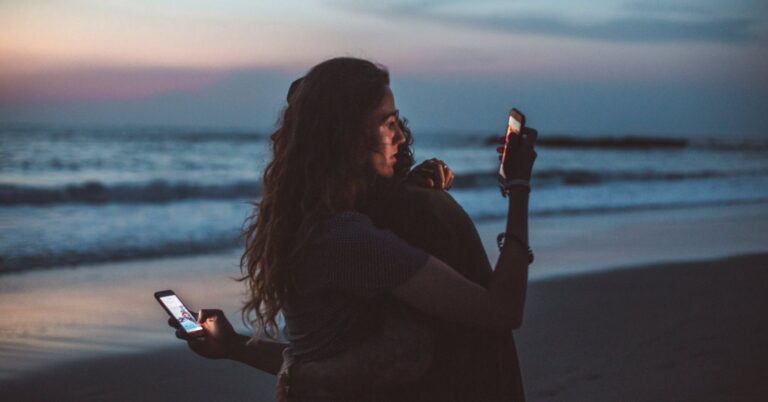
Source: Yan Krukau / Pexels
When people think of creativity, it’s often in the context of poets, painters, filmmakers, and others involved in the arts. But, as it turns out, creativity may be one of our best evolutionary advantages—not just because it fuels art but also because it allows us to generate, discern, and execute novel and useful ideas and solve meaningful problems.
A 2021 study of people’s experiences during the pandemic found that more creative people reported less perceived stress, more positive emotions, and higher rates of satisfaction with their lives. In other words, creativity even has the power to boost our well-being amid crises.
But how do you summon the creative energy you need to overcome life’s difficulties or ignite positive change when you’re paralyzed by grief and fear over the state of the world? After all, spending even a few moments reflecting on our tangled web of environmental, economic, social, and geopolitical crises (coined “the polycrisis”) is enough to crush your spirit, leaving you overwhelmed and emotionally exhausted.
Fortunately, although creativity requires considerable expansive thinking to generate ideas and capture insights, plus stamina and emotional resilience to execute them, it’s far from impossible.
Here are three recommendations that will help you harness and conserve your creative resources so you can stay buoyant and hopeful and help effect change amidst this polycrisis.
Define and limit your media consumption.
Humans are naturally curious, dopamine-seeking creatures and many of us want to be well-informed citizens. So, it’s no surprise we fall prey to the 24-hour news cycle and struggle to turn off the relentless stream of media spouting from our ever-present mobile devices.
Unfortunately, news sites and social media platforms bombard us with more horrific images and stories than our brains can effectively process at once, which is why we often end our scrolling sessions feeling mentally depleted, anxious, and depressed. Research on doomscrolling also shows it’s linked with anxiety and poor self-control—which doesn’t exactly leave us primed for creative thinking.
To remain informed without falling into the doomscroll trap, it’s best to set parameters for more intentional media consumption. Here’s how:
- Determine what’s meaningful to you. You don’t need to know everything the algorithms send your way. Instead, identify which issues are most important to you and strive to tune out the rest.
- Define the purpose of your media consumption. Harness your focus by asking yourself why you need to learn more about a given topic, what you’ll do with that information, and whether engaging in that moment will be helpful or harmful.
- Restrict your engagement sessions. Decide what media you’ll consume on your chosen issue(s) and for how long you’ll engage. Set timers to check in with your body every few minutes and note how you feel. Is your heart rate increasing? Are your shoulders tensing? Take a break from the news when you notice physical manifestations of stress.
Find the work that lights you up and use it to impact your “patch.”
You and I aren’t going to save the world single-handedly. We each have limited time and energy, and attempting to address every issue we encounter will leave us too overwhelmed to achieve anything meaningful.
Instead, it’s much more beneficial to find work that makes you feel hopeful and buoyant and use it to salve the woes of your patch of the planet (i.e., the people who would benefit most from your creative efforts).
For example, one of my clients is writing a book about climate change because it’s a topic she’s passionate about, and she finds the work fulfilling. But she isn’t writing this book for everyone because she knows that would be an impossible task. People who are already activists probably don’t need convincing, and staunch climate change deniers likely won’t be moved. Instead, she’s honed in on a segment of people she refers to as “reluctant but concerned.” By fostering her empathic curiosity, she’s encouraging her patch to step off the sidelines and into the movement.
Laser-focusing on your patch of the planet allows you to ignite a great deal more change than if you try to tackle every upsetting problem. And doing it through work that lights you up means you’re more likely to feel satisfied and fulfilled.
Redirect your default mode network.
The default mode network (DMN) is a brain system that’s active during passive rest—when the body operates on autopilot and the mind wanders. This system is a wellspring of fodder for creative insight, and it’s one reason our best ideas often surface when we’re doing something routine, like folding laundry or taking a shower.
Creativity Essential Reads
However, your DMN can also hijack your mind, creating stories and conjuring up all sorts of anxiety-inducing scenarios. This is why you may find yourself ruminating over an embarrassing moment from several years ago or spiraling over fears for the future, like whether or not you’ll lose your job if economic issues worsen.
So, how do you drive your default mode network to serve creative ideas or solve problems rather than brood over a past you can’t change or agonize about an unknown future? According to research conducted at the University of Graz, the ability to generate creative ideas is linked to increased connectivity between the prefrontal cortex (the part of the brain that regulates your thoughts and emotions) and the DMN. In other words, we need to find ways to support cooperation between cognitive control and imagination.
Try this: Next time you’re stumped, overwhelmed, or feeling anxiety bubble up, resist the urge to reach for your phone or tune out with Netflix. Instead, take a walk and follow your curiosity. Explore your natural surroundings and notice the fall foliage, patterns in tree bark, or flocks of migratory birds soaring overhead.
By shifting your focus, you’re priming your brain to connect creative combinations, leading you to your next “aha” moment. But, even if it doesn’t, stepping away from screens and spending time in nature is an excellent way to nourish your soul and replenish your spirit during troubling times.



















+ There are no comments
Add yours